
Homebuilder Meritage Homes (NYSE:MTH) beat Wall Street’s revenue expectations in Q2 CY2025, but sales fell by 4.6% year on year to $1.62 billion. Its GAAP profit of $2.04 per share was 3.8% above analysts’ consensus estimates.
Is now the time to buy Meritage Homes? Find out by accessing our full research report, it’s free.
Meritage Homes (MTH) Q2 CY2025 Highlights:
- Revenue: $1.62 billion vs analyst estimates of $1.59 billion (4.6% year-on-year decline, 2.4% beat)
- EPS (GAAP): $2.04 vs analyst estimates of $1.97 (3.8% beat)
- Free Cash Flow was $6.91 million, up from -$124.8 million in the same quarter last year
- Backlog: $695.5 million at quarter end, down 37.3% year on year
- Market Capitalization: $5.41 billion
Company Overview
Originally founded in 1985 in Arizona as Monterey Homes, Meritage Homes (NYSE:MTH) is a homebuilder specializing in designing and constructing energy-efficient and single-family homes in the US.
Revenue Growth
Reviewing a company’s long-term sales performance reveals insights into its quality. Any business can have short-term success, but a top-tier one grows for years. Luckily, Meritage Homes’s sales grew at a solid 9% compounded annual growth rate over the last five years. Its growth beat the average industrials company and shows its offerings resonate with customers.
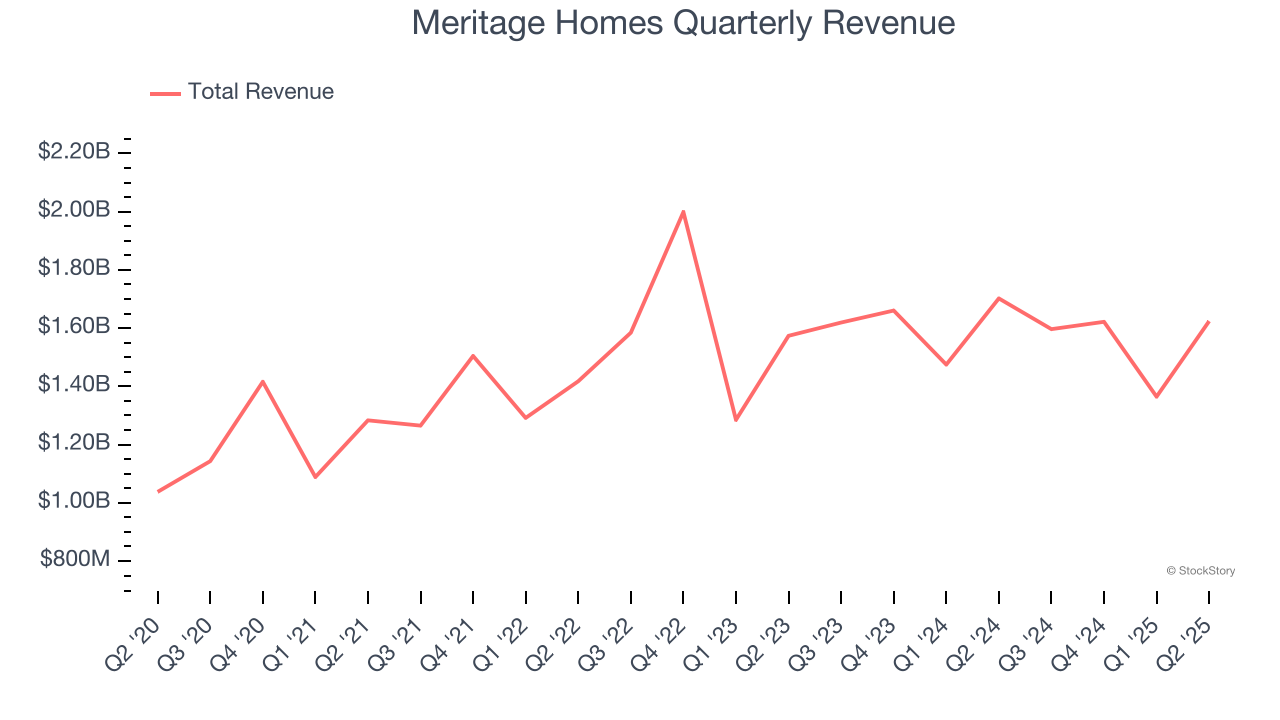
We at StockStory place the most emphasis on long-term growth, but within industrials, a half-decade historical view may miss cycles, industry trends, or a company capitalizing on catalysts such as a new contract win or a successful product line. Meritage Homes’s recent performance marks a sharp pivot from its five-year trend as its revenue has shown annualized declines of 1.8% over the last two years. 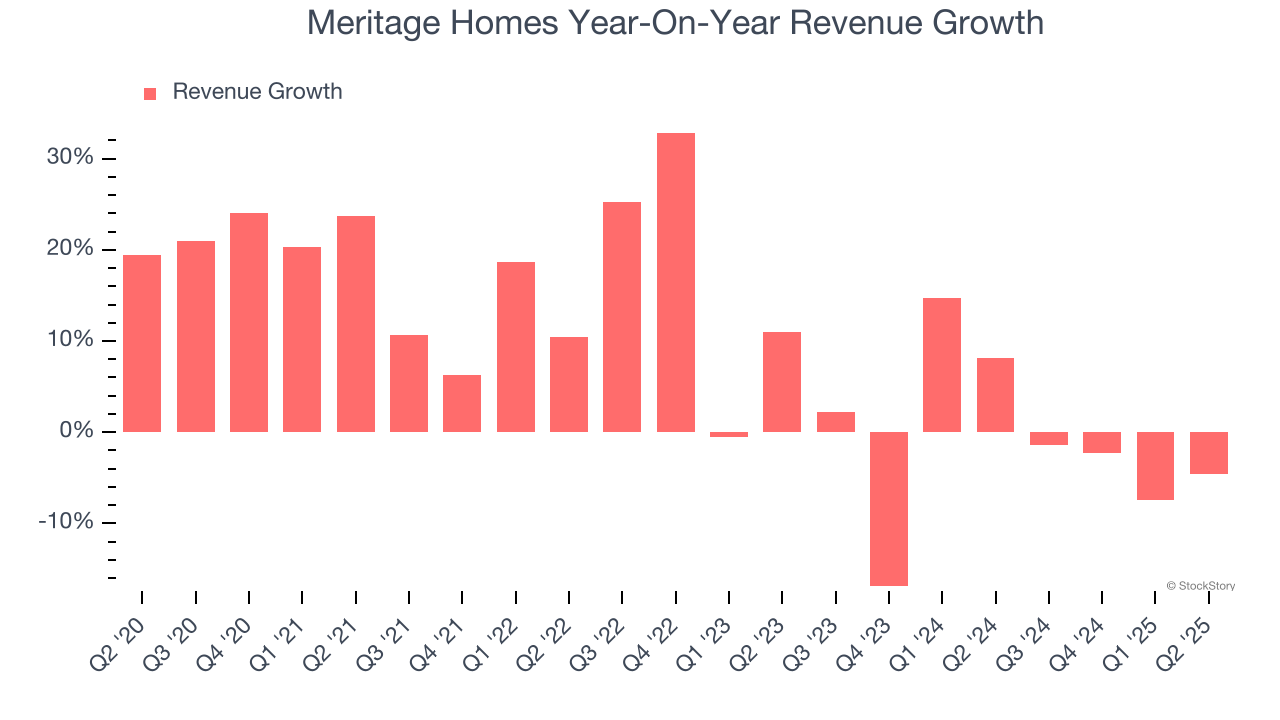
Meritage Homes also reports its backlog, or the value of its outstanding orders that have not yet been executed or delivered. Meritage Homes’s backlog reached $695.5 million in the latest quarter and averaged 36.5% year-on-year declines over the last two years. Because this number is lower than its revenue growth, we can see the company hasn’t secured enough new orders to maintain its growth rate in the future. 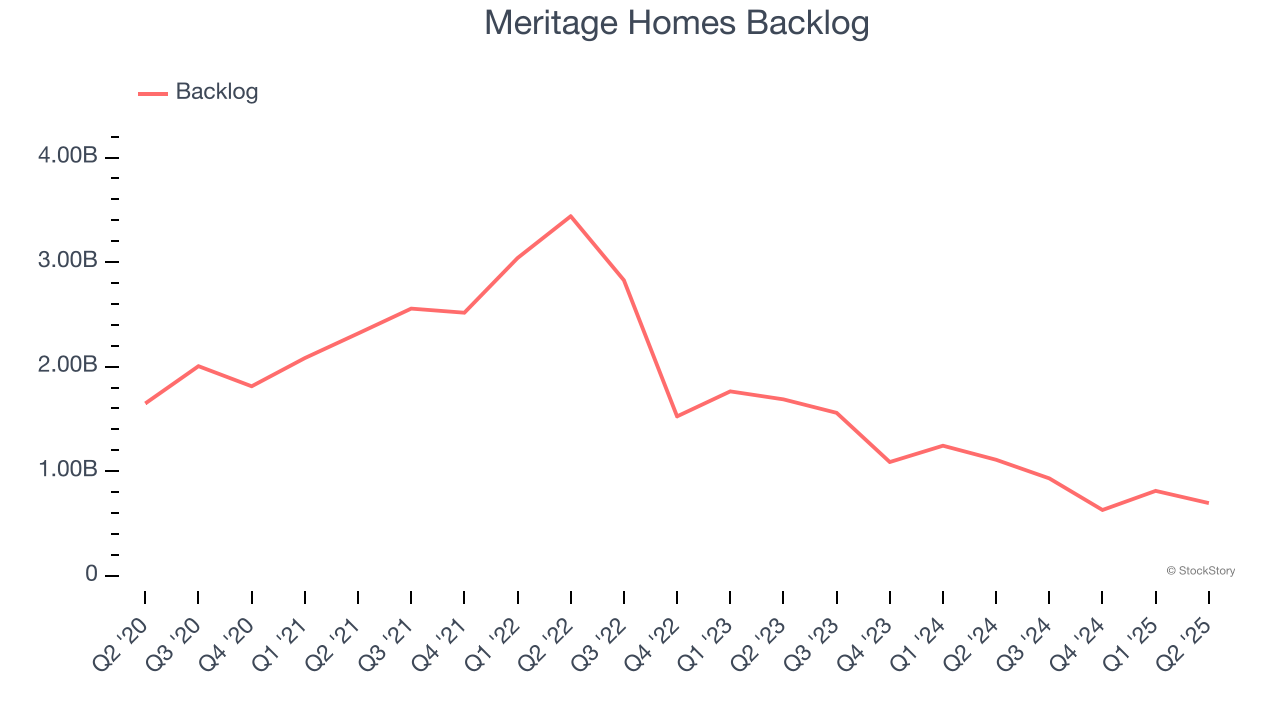
This quarter, Meritage Homes’s revenue fell by 4.6% year on year to $1.62 billion but beat Wall Street’s estimates by 2.4%.
Looking ahead, sell-side analysts expect revenue to grow 8.3% over the next 12 months, an improvement versus the last two years. This projection is above the sector average and indicates its newer products and services will fuel better top-line performance.
Unless you’ve been living under a rock, it should be obvious by now that generative AI is going to have a huge impact on how large corporations do business. While Nvidia and AMD are trading close to all-time highs, we prefer a lesser-known (but still profitable) stock benefiting from the rise of AI. Click here to access our free report one of our favorites growth stories.
Operating Margin
Operating margin is an important measure of profitability as it shows the portion of revenue left after accounting for all core expenses – everything from the cost of goods sold to advertising and wages. It’s also useful for comparing profitability across companies with different levels of debt and tax rates because it excludes interest and taxes.
Meritage Homes has been a well-oiled machine over the last five years. It demonstrated elite profitability for an industrials business, boasting an average operating margin of 16.6%. This result was particularly impressive because of its low gross margin, which is mostly a factor of what it sells and takes huge shifts to move meaningfully. Companies have more control over their operating margins, and it’s a show of well-managed operations if they’re high when gross margins are low.
Analyzing the trend in its profitability, Meritage Homes’s operating margin decreased by 1.1 percentage points over the last five years. This raises questions about the company’s expense base because its revenue growth should have given it leverage on its fixed costs, resulting in better economies of scale and profitability.
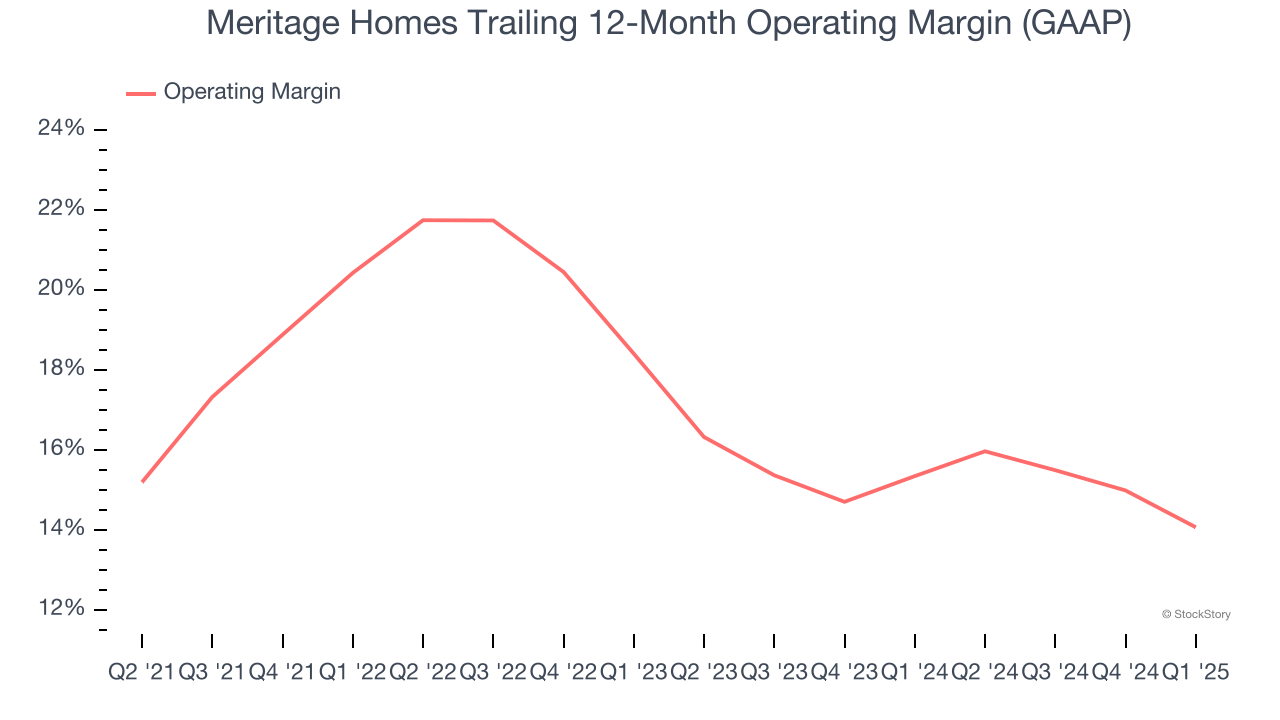
Earnings Per Share
Revenue trends explain a company’s historical growth, but the long-term change in earnings per share (EPS) points to the profitability of that growth – for example, a company could inflate its sales through excessive spending on advertising and promotions.
Meritage Homes’s EPS grew at a spectacular 15.2% compounded annual growth rate over the last five years, higher than its 9% annualized revenue growth. However, this alone doesn’t tell us much about its business quality because its operating margin didn’t improve.
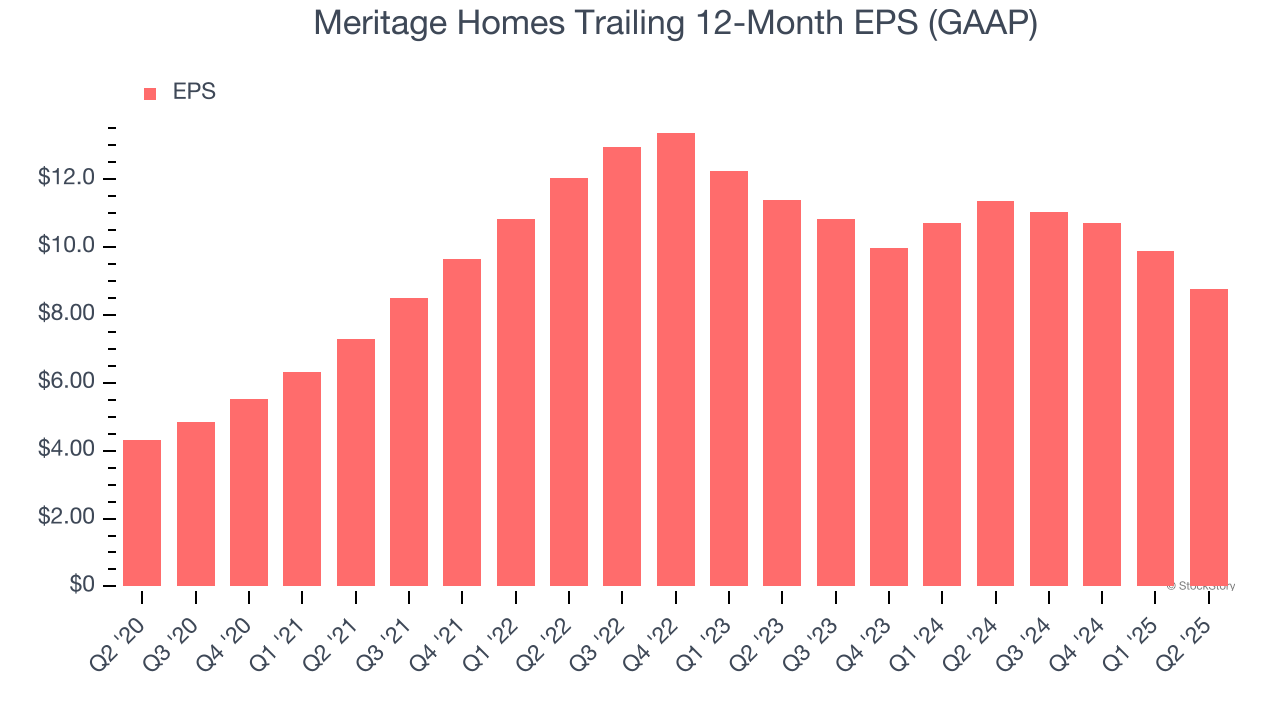
We can take a deeper look into Meritage Homes’s earnings quality to better understand the drivers of its performance. A five-year view shows that Meritage Homes has repurchased its stock, shrinking its share count by 5.8%. This tells us its EPS outperformed its revenue not because of increased operational efficiency but financial engineering, as buybacks boost per share earnings. 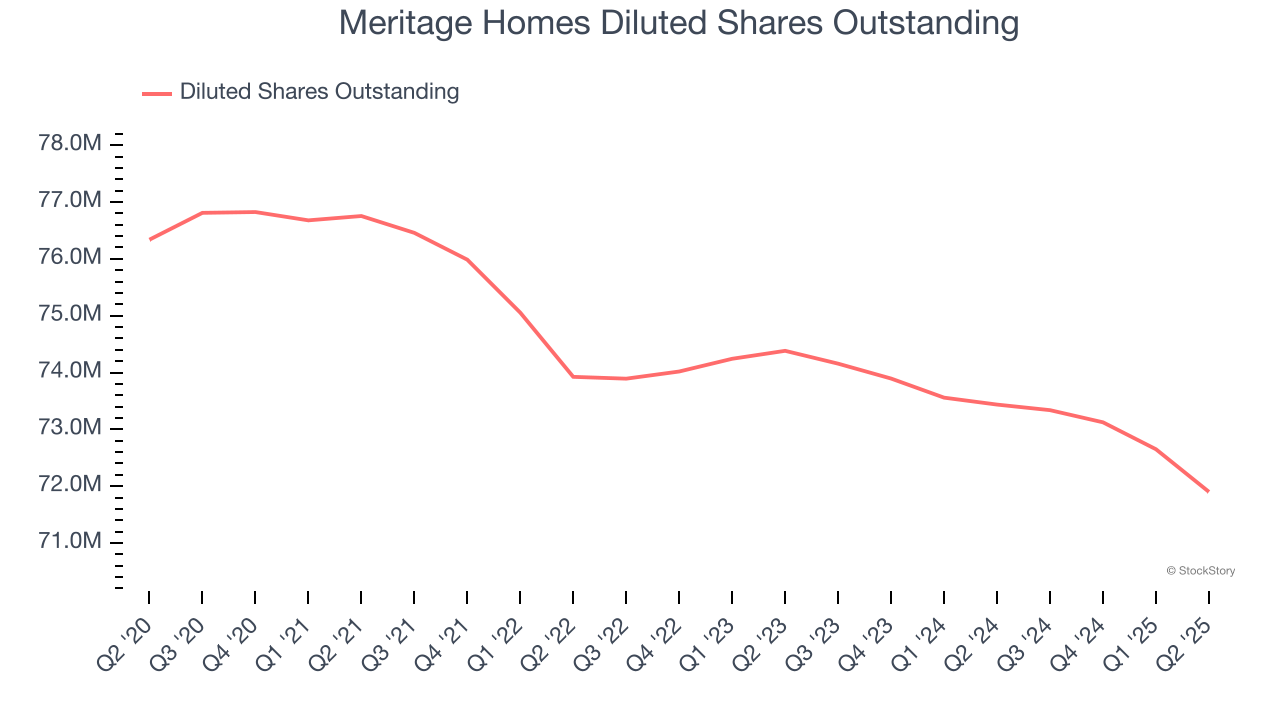
Like with revenue, we analyze EPS over a more recent period because it can provide insight into an emerging theme or development for the business.
For Meritage Homes, its two-year annual EPS declines of 12.2% mark a reversal from its (seemingly) healthy five-year trend. We hope Meritage Homes can return to earnings growth in the future.
In Q2, Meritage Homes reported EPS at $2.04, down from $3.15 in the same quarter last year. Despite falling year on year, this print beat analysts’ estimates by 3.8%. Over the next 12 months, Wall Street expects Meritage Homes’s full-year EPS of $8.76 to shrink by 1.9%.
Key Takeaways from Meritage Homes’s Q2 Results
We enjoyed seeing Meritage Homes beat analysts’ revenue expectations this quarter. We were also happy its EPS outperformed Wall Street’s estimates. On the other hand, its backlog missed. Overall, this quarter was mixed. The stock remained flat at $75.38 immediately after reporting.
Should you buy the stock or not? When making that decision, it’s important to consider its valuation, business qualities, as well as what has happened in the latest quarter. We cover that in our actionable full research report which you can read here, it’s free.
